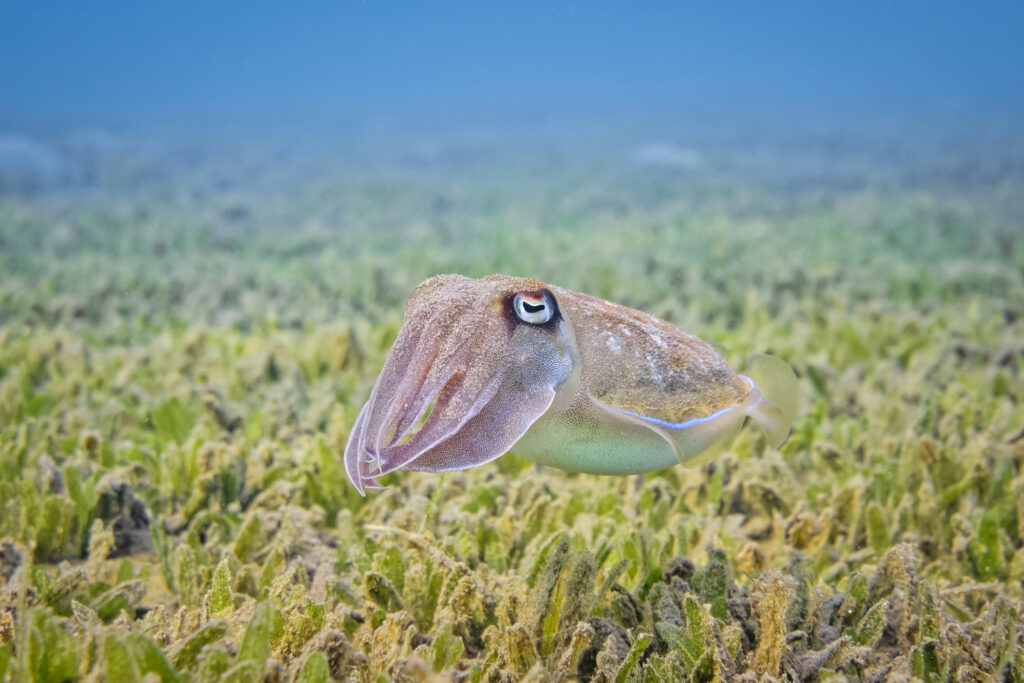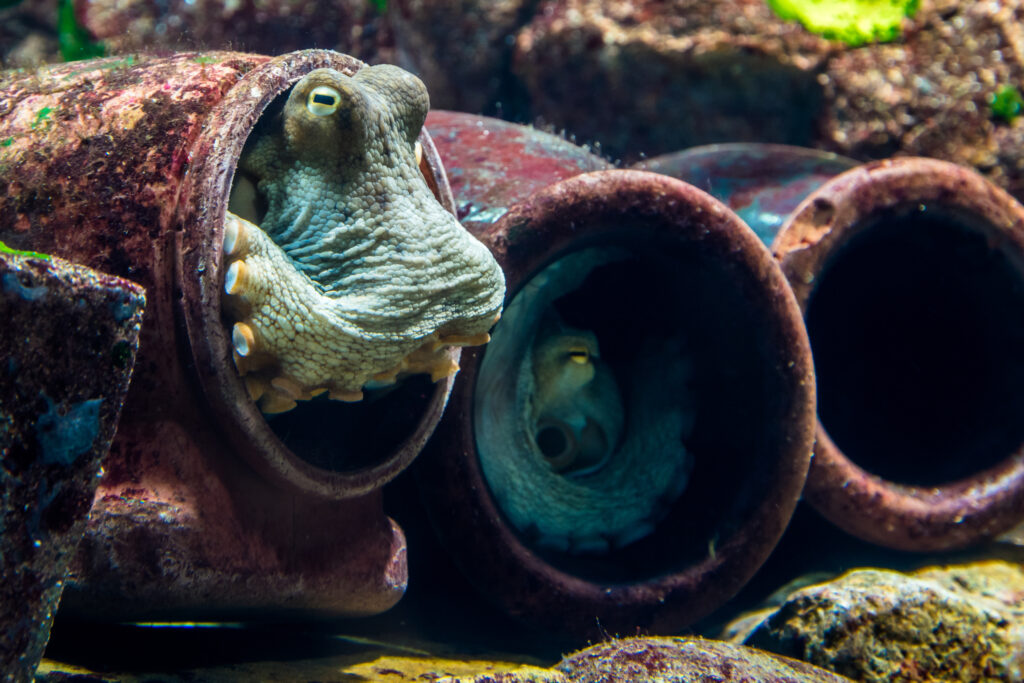Throughout the world’s oceans, there is an incredible range of remarkable creatures, from huge whales to teeny plankton. One of the most fascinating, and intelligent species to have evolved to inhabit the waters of the earth are cephalopods, known for their incredible adaptability and unique anatomy.
Despite potentially being unfamiliar with the term cephalopod, you will be aware of animals that fall under this classification such as octopus, squid, and maybe even cuttlefish.
In this blog, we’ll explore what cephalopods are and how you can identify them despite their broad and diverse set of characteristics.
Key characteristics of a cephalopod
One key way to identify a cephalopod is the unique trait that gives it its name. Cephalopod literally translates to ‘head foot’ in Greek because their limbs are directly connected to their bodies.
Their ‘bodies’ consist of a muscular sack called a mantle which holds and protects all their vital organs. Their organs differ from what we perceive as normal, for example, their main brain is donut-shaped.

Cephalopods have 3 hearts! One heart is responsible for pumping blood around the body, whereas the other two are responsible for pumping blood over the gills to provide oxygen-rich blood to the animal. This is beneficial as some species live in parts of the ocean which is low in oxygen.
Octopuses even have more than one brain; they have one brain for organ function and eight semi-independent nervous systems, or mini-brains, that each control a limb for a total of nine brains. This gives them the largest and most complex nervous system out of any invertebrate.
Their eyes are also incredibly difficult to miss because of their size, helping them to see well underwater, good for living deep down in dark caves.
The evolution of cephalopods
Cephalopods belong to the class Cephalopoda within the phylum Mollusca, making them close relatives of snails, clams, and other molluscs. Cephalopods, however, branched off into a unique evolutionary path which has made them some of the most intelligent invertebrates on the planet.
Archaeological evidence suggests that cephalopods first appeared over 500 million years ago during the Cambrian period. Early cephalopods that have been fossilised had external shells which helped protect them from predators. This has mostly disappeared from the class of animals, although the nautilus still relies on a hard shell for protection.

Because of the age of this class of animals, it’s no wonder that many of them have gone extinct over the years due to factors such as environment and diet, however, there are still over 800 identified species that are still alive today, including our friends the octopuses, squids, and cuttlefish.
The most fascinating things about cephalopods
It’s not just the unique appearance of cephalopods that makes them incredibly fascinating, but their amazing behaviour that cannot be found readily anywhere else in the animal kingdom.
Masters of camouflage
Almost all cephalopods are blessed with the ability to camouflage by changing their colour, texture and pattern using specialised cells called chromatophores. When the muscles around these cells tighten, the sac of cells will expand making more pigment visible, changing their texture and allowing them to become masters of disguise.
These cells aren’t just used for camouflage, they’re also used for communication with potential mates or predators.
Some species of cephalopod are even masters of mimicry, with the mimic octopus able to replicate the appearance and movements of more dangerous animals such as sea snakes or flatfish.
Highly intelligent
Cephalopods are known for their miraculous ability to solve puzzles and mazes using their large brains to overcome obstacles.
Some species are even known to use tools such as coconuts as shelters so that they can evade predators more effectively.

They also exhibit incredible long and short-term memory, giving them the ability to learn from their experiences so that they can keep themselves safe in future.
All of these abilities inform our understanding of cephalopods’ cognitive function, cementing them as some of the most intelligent invertebrates on the planet.
Unique movements
Cephalopods don’t have fins like fish or marine mammals do, meaning that they must rely on other forms of propulsion.
They use their arms to swim in a rudimentary fashion, but this isn’t very quick and is therefore not particularly effective when they need to get away from predators.
When they’re in danger, cephalopods can expel water from their funnel, which acts as jet propulsion to dart away from danger. Incredible!
Cephalopods are truly one of the ocean’s most fascinating creatures, with their complex anatomy, ancient evolutionary history, and highly intelligent behaviours.
You can see a giant Pacific octopus at Blue Planet Aquarium and witness the incredible abilities of a wonderful cephalopod in person.
